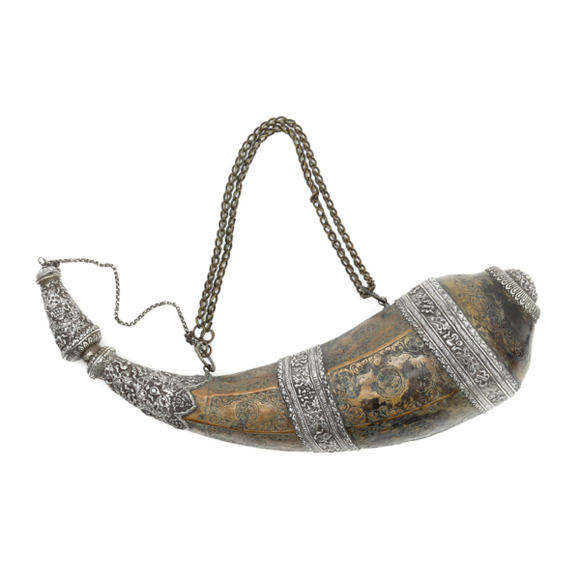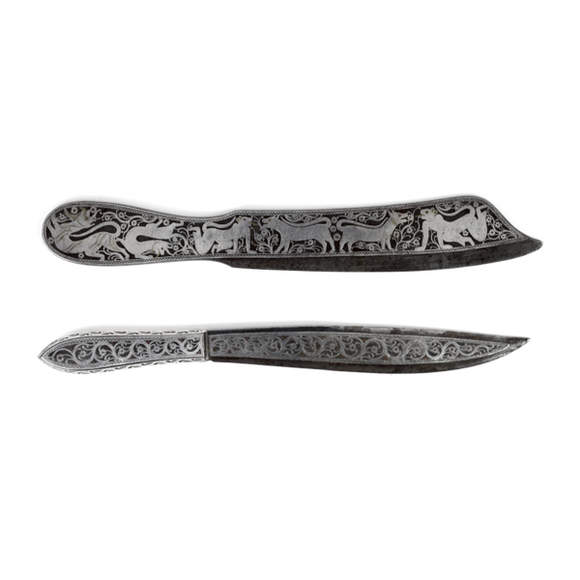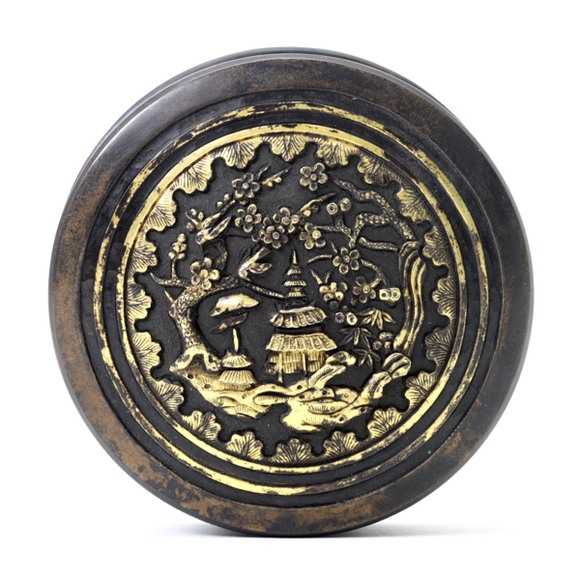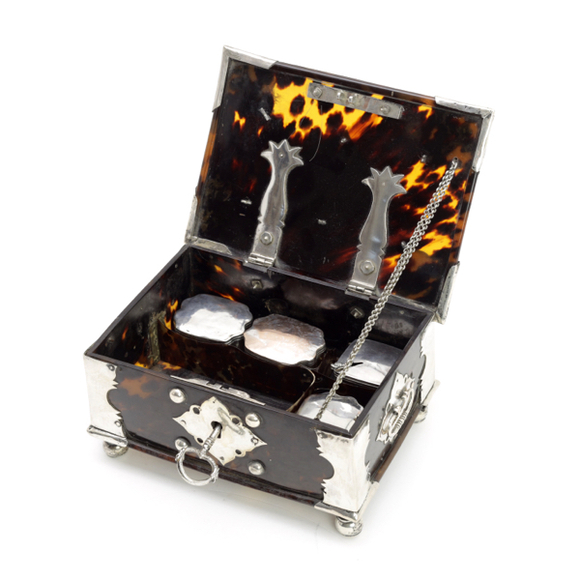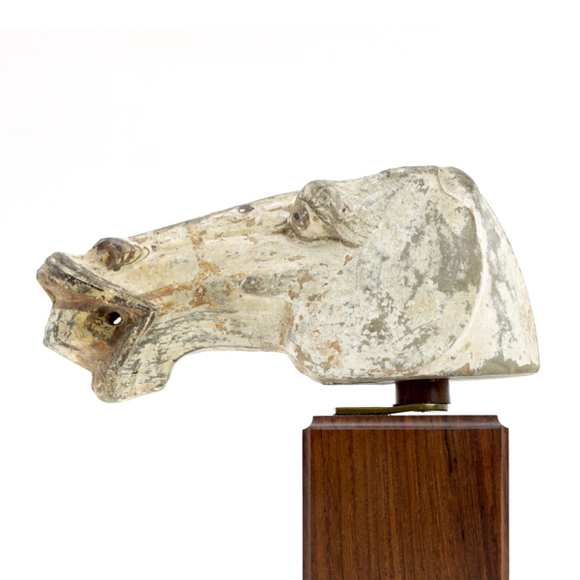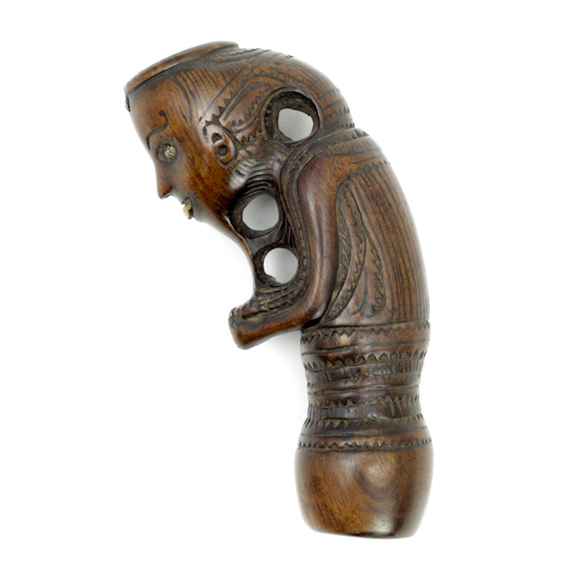Such work was made in the Royal workshops of Lhasa.

Width 17.5
Depth 9.7
Height 7.8 cm
872 grams
Copper alloy
India
18th century
From a British collection
Introduction
Betel nut chewing was a widespread custom in Asia, in particular India and Southeast Asia. Like tea in the European tradition, betel nuts were offered to guests in one's home and enjoyed together in social gatherings. The nuts are from the areca palm. In a typical session, the nut is sliced, mixed with slaked lime paste, and wrapped in a betel leaf. This package is then called a betel quid. The lime reacts with compounds in the nuts, creating a stimulating effect.
This betel box
Presented here is an old Indian betel box from the 18th century. The box itself appears to be made of bronze or some other copper-rich alloy, while the perfectly fitting lid is more brass colored. It is rectangular in shape with lobed sides, it is engraved with stylized leaf borders, and a flower on top.







Sawasa is metalware in black and gold made primarily for the Dutch expat community in Asia.

